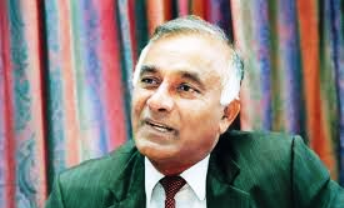I submit this letter to you with the knowledge of the probability that it would not be published since the Press seems to have little interest in matters related to a realistic assessment of the Indo-Trinidadian condition in this country today.
Nevertheless, I had decided to pursue my limited inquiry in three areas- the Indo-Trinidadian presence in land ownership, in the economy and in the professions. Later, I intended to look at the engagement of Indo-Trinidadians in political power and in the socio-cultural sphere.
The reasons for my investigation and resulting conclusions is to challenge the widespread belief that Indo-Trinidadians occupy a decidedly dominant position in the above mentioned three areas and to place their presence in some national and realistic perspective taking into account their current proportion of the population. I have concluded that this pervasive notion of confirmed dominance is at worst a contrived and calculated distortion of the reality or, at best, a facile opinion and a historical perpetuation without the benefit of factual and statistical validation.
Such a misconceived view has socio-economic and political consequences. It projects a false notion of economic prosperity and well-being of the whole Indo-Trinidadian community and ignores the grinding poverty, hopeless subsistence existence and debilitating dispossession of a substantial sector of the community such that public programmes to address them are either non-existent or of low priority. The misconception militates against the establishment of a sustainable platform for viable ethnic relations especially between Indo-Trinidadians and Afro-Trinidadians. It is also counter-productive to a unified national perspective and the priorities and programmes for equitable resource mobilization and holistic development.
I have already commented on the issue of perceived Indo-Trinidadian dominance of land ownership and the economy. On the question of their majority dominance of the professions, attention is largely limited to medicine and law- the two most prestigious and visible of them. The limited involvement of Indo-Trinidadians in medicine and law in the first half of the twentieth century is generally known to those with some historical knowledge. In 1954, of the 200 or so medical practitioners in the country, only 32 (16 per cent) were of Eat Indian origin. By 1984, this number had increased to 359 or 36 per cent of the total.
It is not certain what is the total number who are medical practitioners currently in practice and what percentage is Indo-Trinidadian. The list of 6,174 provided by the Medical Board of TnT is not very useful as it includes a very large number who are non-nationals and many who are deceased or are abroad. After a cursory perusal of the list my estimate is that there are about 3,200 TT nationals in both the public and private sectors currently practicing. Of this figure, it is surmised that at least 40 per cent or about 1,300 are of East Indian origin and about 60 per cent or so of other ethnicities including Afros, Mixed, Syrian, Chinese and Local Whites.
In law, of the 131 barristers and solicitors active in TnT in 1952, only 35 (26 per cent) were of East Indian descent. By 1988, a total of 417 attorneys were issued practicing certificates of whom 146 (35 per cent) were Indo-Trinis. In 2019, it was reported that 2,594 attorneys were registered with the Law Association of TnT which may be an understatement of the total given that some did not bother to register. Today, there are probably about 4,000 attorneys engaged in both the public and private sectors with at least 40 per cent (1,600) being Indo-Trinidadian and 60 per cent or so of other ethnicities.
In discussion of these two most prestigious professions and their ethnic composition a number of considerations should be taken into account. Though these two professions are visible and high profile, not all of their members would be high net income earners. There will be many among them who earn modest net incomes, others average net incomes and the minority high net incomes. Recently, hundreds of doctors graduating from UWI could not find employment. The same is true of lawyers.
In terms of the total number of families in the country headed by a member of these professions, we are speaking about 7,200. Of this figure about 3,000 families are headed by an Indo-Trinidadian doctor or lawyer. Of the over 157,000 Indo-Trinidadian families in TnT, this figure represents less than 2 per cent.
Most importantly, however, medicine and law are only two professions among the myriad of professions in a modern-day socio-economic system. Some examples will suffice. There are a host of engineers of various types of training. In the construction sector there are architects, planners, project designers and surveyors. In business and public administration there are managers, executives, administrators, consultants, economists, accountants, auditors, entrepreneurs etc. In academia, there are professors, lecturers, scientists, researchers etc. Then there are more mundane professions such as nurses, teachers, policemen, fashion designers, beauticians etc.
If, therefore, we take into account the whole range of professions in the country inclusive of those of lesser prestige and examine their ethnic composition, particularly those employed directly or indirectly in the public sector, it would indeed be invidious to sustain the claim of Indo-Trinidadian dominance.
By Trevor Sudama
